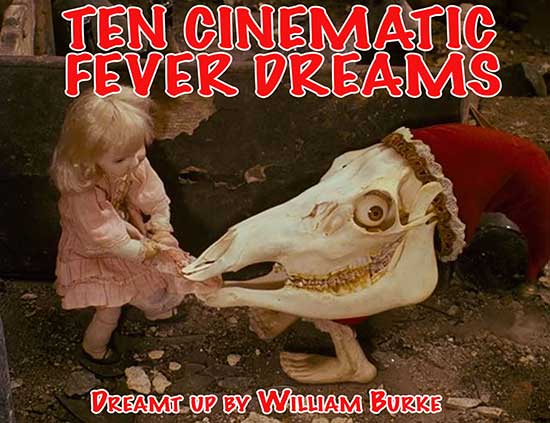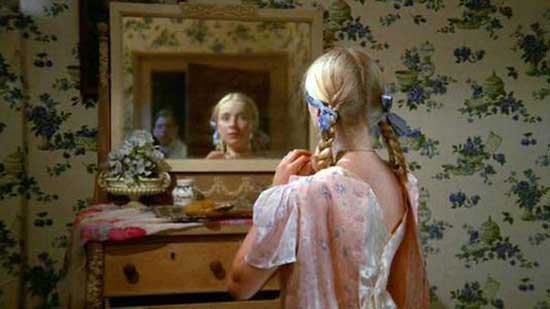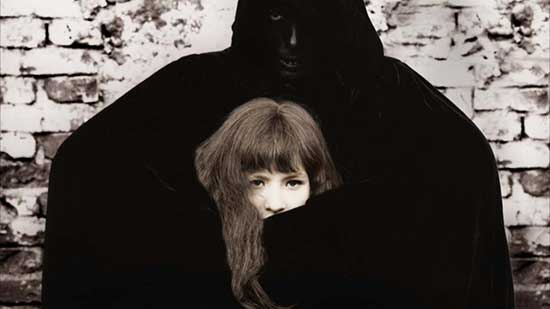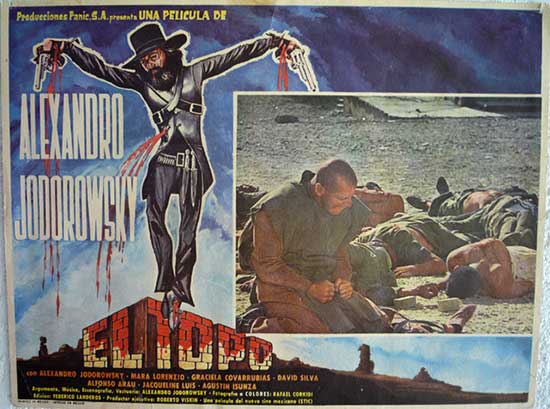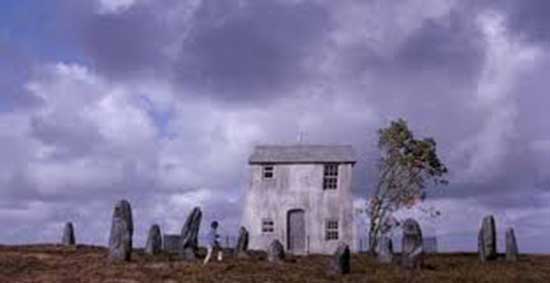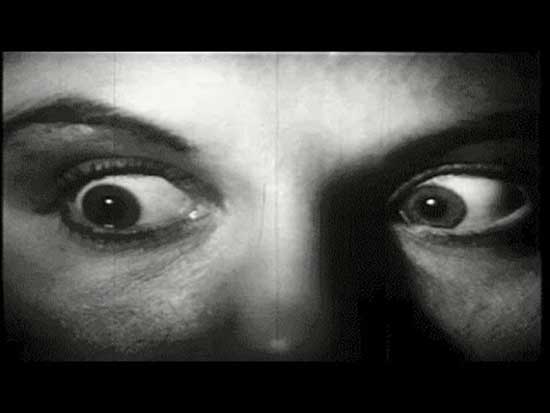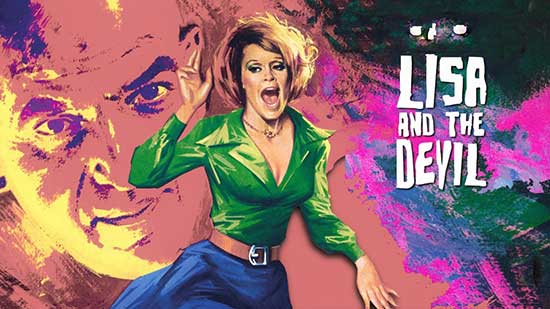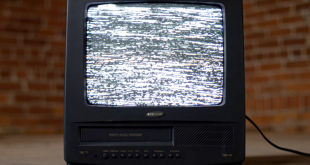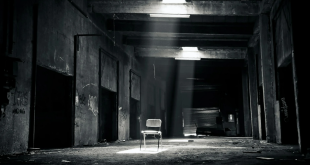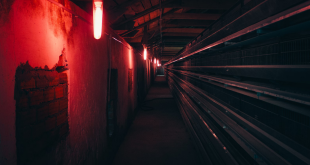Most films strive for linear, coherent storytelling, creating a believable world full of relatable characters. But occasionally you stumble across a film that breaks the shackles of logic and reason to explore a dreamlike realm. Here are ten films that offer a guided tour of a filmmaker’s inner thoughts, fears and desires. You can label them experimental, surreal, oneiric or just druggy, but each film represents a priceless journey into the mind’s eye of the creator.
This isn’t intended as a best to worst top ten list because trying to rate a dream is foolish. Consider it a selection of personal favorites including a few well-known films and some forgotten treasures waiting to be discovered.
01- LEMORA: A CHILD’S TALE OF THE SUPERNATURAL, 1975
On the surface Lemora is the tale of an adolescent girl who’s abducted by vampires while searching for her father. It’s probably the most linear film on this list in terms of story, but that’s not saying much. Director Richard Blackburn’s iconoclastic creation explores a young girl’s journey into womanhood set against a backdrop of religious piety. Two characters symbolize her internal conflict. First is her guardian, a Baptist minister representing virtue. The other is Lemora, the vampire queen who embodies either sin or freedom, depending on your interpretation. You can enjoy Lemora as a solid horror film packed with chilling images or you can start peeling away its many layers to uncover the gems hidden beneath. I recommend both.
02- VALERIE AND HER WEEK OF WONDERS, 1970
Jaromil Jires’ film provides a perfect European counterpart to Lemora. It also offers a fleeting glimpse of the Czech New Wave Movement’s artistry before it was crushed beneath Russian tanks. Valerie and Her Week of Wonders might be a vampire film, or a young girl’s coming of age tale, or is it a religious allegory of totalitarian oppression? The answer is yes to all those and anything else you choose it to be. There isn’t a plot in the traditional sense and actors sometimes play multiple roles with no explanation, but the imagery is so resplendent that you’ll feel like you’ve been invited into someone’s dream. From the opening shots of a perfect field of flowers being speckled with Valerie’s first menstrual blood to its final frenzied dance number you’ll be hypnotized. The first time I saw Valerie I was confused, the next four times I was entranced.
03 – ERASERHEAD, 1977
David Lynch’s feature debut is a bold visual and sonic statement that virtually invented the midnight movie. This frightening, uncomfortable and occasionally hilarious journey into Lynch’s psyche was created as his student project for the American Film Institute. It seemed destined to be screened for students and academics and then forgotten. But its release in key theaters at midnight, coinciding with the burgeoning punk movement, catapulted it into becoming a workingman’s Avant-garde piece, earning it a place in pop culture history and launching Lynch’s career.
04- EL TOPO (THE MOLE), 1970
I could probably list Alejandro Jodorowsky’s entire filmography in this article, but I’ve chosen this breakthrough film as his signature entry. If you binge watched spaghetti westerns in a state of sweat lodge induced delirium while reading Siddhartha you might dream El Topo. It’s the tale of a master gunfighter out to defeat the other master killers, but in his quest he is transformed into something mystical. After seeing it you might also be transformed. Back in the day a friend confessed, “I saw El Topo and I hated it. Then I found myself talking about it with everyone I ran into, desperately trying to describe it. El Topo refused to leave my mind so I watched it again and loved it.” That pretty much sums it up. After this film you might be ready for Jodorowsky’s even more challenging 1973 follow up The Holy Mountain.
05- PHANTASM, 1979
On the surface Don Coscarelli’s Phantasm is a fairly logical slam-bang horror film packed with cool car chases and explosions. But look closer and you’ll discover a vivid exploration of the dream state. Is young Mike dreaming the whole story as an emotional release after losing his older brother or are the events truly unfolding? It’s never really clear to the viewer and that uncertainty adds an extra layer of anxiety. Phantasm is also unique in presenting a nether world where a fifteen-year-old can shoot monsters and get in high-speed car chases with no evidence of adult supervision. Hey, if you’re a fifteen-year-old blowing away dwarfs with a 45 automatic and bombing around in a Hemi Cuda … you must be dreaming.
06- HOUSE (HAUSU), 1977
I’m not referring to that William Katt movie entitled House (1985). Hausu is the unforgettable creation of Japanese filmmaker Nobuhiko Obayashi. It’s the tale of seven schoolgirls visiting an aunt’s house, which inexplicably tries to eat them. The plot isn’t important, what matters is the barrage of imaginative rapid-fire set pieces. The special effects are delightfully low tech, employing paper cutouts, reverse action and other George Méliès era techniques—an approach that enhances its dreamy unreality. Amazingly, this work of slapstick surrealism was produced by Japan’s largest studio, Toho Films, who never interfered with its production or editing. It doesn’t make a lick of sense … but you’ll love it.
07- PAPERHOUSE, 1988
Bernard Rose’s film primarily exists within a dream, or series of dreams. An eleven-year-old girl recovering from an illness draws a house only to discover she can travel there in her dreams. With every new sketch the house takes on more life, including a handicapped boy she befriends and a blind monster based on her father. Paperhouse is full of imaginative visuals and unexpected, often inexplicable, events but it’s also a compelling film with a very moving climax. This is not a rapid-fire thrill ride like Hausu—in Paperhouse the filmmaker takes you by the hand and gently leads you through a child’s fears and hopes—it’s a lovely place to explore.
08- ALICE, 1988
“Now you will see a film made for children … perhaps. But I nearly forgot, you must close your eyes or you won’t see anything.” That’s the opening narration of my favorite, and certainly the most disturbing, re-telling of Alice in Wonderland. Stop motion animation, live action and pure imagination collide in what’s less of a literary adaption and more a warped mirror image of its source. Forget everything Disney taught you about Lewis Carroll’s classic—in Jan Svankmajer’s world we’re introduced to the white rabbit when he escapes from a taxidermist’s cabinet by pulling nails from his feet (ala a crucifixion) before stitching himself back together. Stop motion animated porcelain dolls and animal skeletons prowl Wonderland, which is represented as an abandoned mansion draped in decaying wallpaper. These surreal, frightening images are intercut with extreme close ups of Alice’s lips. Her simple line, “Said the White Rabbit,” will stitch itself to your psyche. This Czech masterpiece has been a huge influence on Tim Burton (but on not his 2010 version of Alice In Wonderland) and Guillermo del Toro.
09- DEMENTIA (aka – DAUGHTER OF HORROR), 1958
This obscure curio pioneered a sub genre I like to call avant-gutter. Dementia is fifty-eight delirious minutes of dime store surrealism photographed by Ed Wood’s regular cameraman William C. Thompson—an unfairly dismissed master of black and white noir. It’s a loosely structured “night in the life” of a young woman as she traverses a blighted urban landscape full of ghosts, pimps and lechers. The backdrop truly looks like something Tom Waits would conjure up after eating bad shellfish. Dementia bravely explores Freudian mother issues, schizophrenia, patricide and sexual violence—a virtual catalog of things not spoken of in 1958. An alternate version entitled Daughter of Horror added a frenzied narration by a pre Johnny Carson Show Ed McMahon — that’s the version seen playing in a movie theater during The Blob (1958). But I heartily recommend experiencing the original silent version, which lets you swim in George Antheil’s atonal jazz score, punctuated by shrieking vocals from the great Marnie Nixon. Dementia was the courageous, if misguided, creation of director John J. Parker who, sadly, never made another film. Parker should have released it on the burgeoning art film circuit using a French pseudonym—a tactic that would have won Dementia the acclaim it deserved. Instead it was released on the horror film market, where it failed miserably before slipping into obscurity. Thankfully, the film has been restored, so sit back and enjoy Dementia, but don’t be surprised if the room inexplicably starts to reek of bourbon, cigarettes, sweat and despair.
10- LISA AND THE DEVIL, 1973
Italian maestro Mario Bava made a career out of creating visually imaginative but highly commercial films like Mask of Satan (1960) and Planet of the Vampires (1965). But in 1972 he was finally given the chance to create whatever he wanted, without interference. The result was Lisa and the Devil, a lyrical but creepy meditation about a woman trapped in a mansion with strangers … but are they really strangers or is she returning home? This is Bava’s Discreet Charm of the Bourgeoisie (1972), and like that film it never panders to its audience or offers easy explanations. Instead we’re served a sumptuous feast of dreamy set pieces shot as only Bava could. Lisa and the Devil was deemed too surreal for mass audiences, inspiring the producer Alfredo Leone to shoot new material, butchering Bava’s director’s cut into a fiasco entitled House of Exorcism. But thanks to some dedicated film lovers you can finally see Bava’s masterpiece in all its uncut glory.
Well, those were a few pages from my movie dream book. If I had more space I’d add films like Dreyer’s Vampyr (1932), Funky Forest: First Contact (2005), The Hourglass Sanatorium (1973) Come and See (1985), The Beyond (1981), The Saragosso Manuscript (1965) or Uzumaki (2000). Please feel free to comment and add your own favorites. Sleep tight … and pleasant dreams.
 Horror News | HNN Official Site | Horror Movies,Trailers, Reviews
Horror News | HNN Official Site | Horror Movies,Trailers, Reviews
